
Sorting and recycling your waste
While the 2% of incorrectly sorted waste in paper and cardboard may seem small, it nevertheless represents almost 1,000 tonnes of incorrectly sorted waste per year.
We encourage you to download our sorting memo and to fix where it can easily be seen (fridge door ...).
What ?
What waste should be sorted in this category?

Waste authorized in the “Paper-cardboard waste” catefory:

- Envelopes, even with windows
- Pure paper / cardboard
- White paper / cardboard
- Colored paper / cardboard
- Paper / cardboard with printed writing
- Letter paper
- Printer / photocopy paper
- Cardboard boxes (washing powder boxes, cereal boxes, …)
- Medication leaflets
- Cardboard tubes or cores
- Metal-free cardboard folders / binders
- Cardboard wrapping paper
- Newspapers
- Magazines
- Telephone directories
- Leaflets
- Advertising
- Brochures
- Books
- Archives
- Files
- Paper bags
- Cardboard packaging
- Office paper
Waste refused in the “Paper and cardboard waste” category:

Tetrapaks
Burnt paper
Wallpaper
Silicone paper
Dirty, soiled or greasy paper / cardboard
Laminated paper / cardboard
Baking paper
Cellophane paper
Carbon paper
Wax paper
Heat-resistant or thermal paper
Metallized / aluminium paper
Paper / bags with aluminium layer
Bread bags
Wrapping paper with plastic
Plasticised paper / cardboard
Tracing paper
Cardboard with an inner plastic layer
Adhesive masking tape / sticky tape
Folders / binders made of plastic or including metal
Takeaway cardboard coffee cups;
Honeycomb paper
Paper towels
Paper tablecloths, tissues and napkins
Diapers / Nappies
Paper polluted by: oil, paint, paraffin or other chemicals
Hazardous waste
Medical waste
Food waste / food
Radioactive or explosive materials
Hard plastics
Plastic films, bags and sacks
Textiles, clothing
Toilet paper
Photos
Where ?
Where should you put your waste?
You can dispose of your paper and cardboard waste :

In the yellow bag

In the yellow container - (apartment buildings)
Paper and cardboard items must be placed loose in the container.

At one of our Recypark - See rates, rules and practical information on the Recypark page.
How ?
How should you present your waste?
A few rules to be observed for paper and cardboard waste:
- Paper and cardboard waste must be clean, dry, free of residues and plastic film.
- When collecting paper and cardboard in bags, it is forbidden to use bags other than the yellow bag provided for this purpose.
- Paper and cardboard waste may also be presented for collection in cardboard boxes. Paper and cardboard waste must not escape from the crate used.
- Cardboard/newspapers that don't fit in the yellow bag must be folded and securely tied. In this case, it's best to use cotton, hemp, jute or sisal rope. Do not use plastic materials for tying.
- Wherever possible, remove any glue, tape or adhesive from boxes before presenting them for collection.
- For the safety of your collection crews, as well as for more efficient processing on your rounds, make sure that your bales of compacted cardboard and cardboard boxes are easy to handle and transport, i.e. of a reasonable size and weight. Prefer two medium-sized bales to one too large or too heavy.
- Bag / Bale / Box of maximum fifteen kilograms (15 kg).
- For container collection, paper and cardboard waste must be deposited in bulk in the container.
- To be accepted for collection, containers must be easily maneuverable by our teams. It's important to take into account the weight of the container and where you place it. For example, a container that is too heavy, or placed on cobblestones or gravel, or requiring a curb cut, may make collection impossible. So keep these details in mind when preparing your containers for collection.
We encourage you to download our sorting memo and to fix where it can easily be seen (fridge door ...).
We encourage you to download our sorting memo and to fix where it can easily be seen (fridge door ...).
What ?
What waste should be sorted in this category?
Waste authorized in the “PMC packaging” category:

Plastics packaging (P)

- Bottles and flasks: lemonade, water, milk, juice, bath / laundry / dishwashing products, etc.
- Trays and dishes: clean or dirty, but emptied of contents
- Jars, tubes and cups: yogurt/flower pots, coffee cups, toothpaste tubes, etc.
- Films, bags and pouches: beverage packaging, potato chip packets, aluminum bags, industrial films of up to 1 m², packaging of less than eight liters (8 L), etc.
- Beverage capsules: coffee capsules, etc.)
- Styrofoam food packaging
Metal packaging (M)

- Cans
- Tin cans,
- Aerosols (for food products, cosmetics, etc.)
- Beverage capsules (coffee, etc.)
- Metal lids, caps and closures (for jars, bottles, etc.)
- Metal cans
- Metal drums
- Aluminum dishes
- Aluminum ramekins
- Aluminum trays
- Air fresheners
- Etc.
Drink cartons (D)

Any laminated brick-type packaging containing liquid products:
- Fruit juice
- Soup
- Milk
- Cream
- Etc.
Waste refused in the “PMC waste” fraction:

- Non-transparent garbage bags
- Multi-material hangers (plastic hangers + metal hook)
- Hard plastics ;
- Syringes, intravenous bags (baxters) and other healthcare waste ;
- Packaging with a capacity greater than eight liters (8 L) (cans,...) ;
- Large industrial films, pallet covers/films and bags greater than 1m² ;
- Strapping (industrial quantity) ;
- Items not considered packaging or too large: plastic buckets, garden hoses, rubber boots, windbreakers, plastic crates, power strips, coffee machines, plastic overshoes, plastic/nitrile gloves, ... ;
- Frigolite / expanded polystyrene - with small white EPS balls ;
- Gas cylinders (butane, propane, helium, nitrous oxide,...) ;
- Batteries (lithium,... ) and batteries ;
- Electrical and electronic appliances ;
- Packaging with child-resistant caps ;
- Packaging of pesticides, insecticides, herbicides, rat poison, anti-foam ;
- Packaging of combustive agents, fuel, motor oil and lubricants ;
- Packaging of glues, paints, lacquers and varnishes, silicone tubes ;
- Clothing / textiles ;
- Packaging composed of a mixture of materials that cannot be separated (layer of plastic film with layer of aluminum film, kraft packaging with waterproof plastic,... ;
- Packaging with at least one of the hazard pictograms (acute toxicity, danger to health, infectious risks, corrosive products, etc.) listed below:


Where ?
Where should you put your waste?
You can dispose of your PMD packaging:

In the blue bag

In the blue container (apartment buildings)
PMD must be placed loose in the container.

At one of our Recypark - See rates, rules and practical information on the Recypark page of our website.
How ?
How should you present your waste?
Some rules for PMD packaging:
- Make sure that the lids of cans are placed fully within the cans. Put them in the blue bag.

- PMC packaging must be well emptied, drained or scraped of its contents.
- For the collection of PMD packaging in bags, the use of bags other than the blue bag provided for this purpose is prohibited.
- Please remove plastic films that cover the whole of bottles, trays or containers and dispose of them separately in the blue bag.
- Flatten the plastic bottles to reduce their width (not their height) and replace the cap.
- Do not nest packaging items inside one another and do not pre-pack your PMD packaging waste in tied bags.
- Don’t attach anything to the outside of the blue bag.
- PMD packaging must have a maximum volume of eight litres (8 l).
- Bags should be a maximum of fifteen kilograms (15 kg).
- PMD packaging may be placed loose in the container. If you wish to use blue bags in the container, these must be the official bags.
- To be accepted for collection, containers must be easy for our teams to handle. It is important to consider their weight and where to leave them. A container that is too heavy, left on cobbles or gravel, or needs to be lifted off a curb may be impossible to collect, so pay attention to these details when preparing your containers for collection.
We encourage you to download our sorting memo and to fix where it can easily be seen (fridge door ...).
Food waste represents about 40% of your white bag. Sorting them allows for green energy recovery and production of compost. Find here all the information on the sorting of food waste in the Brussels Region.
We encourage you to download our sorting memo and to fix where it can easily be seen (fridge door ...).
What ?
What waste should be sorted in this category?

Waste authorized in the “Food or kitchen waste” category:

- Meal leftovers / leftovers on plates (including leftover meat and fish)
- Leftover bread dough from bakeries in any quantity
- Fruit and vegetable peel
- Confectionery without its packaging
- Coffee grounds
- Tea bags made of paper only
- Paper towels used to clear up food leftovers only
- Paper tissues and napkins
- Expired foods (without their packaging).
Waste refused in the “Food or kitchen waste” category:

- Non-food waste, even if biodegradable
- Compostable / biodegradable packaging
- Green / garden waste
- Inert waste (soil, stone, glass, etc.)
- Toxic waste
- Liquid food waste such as soup, oil, dairy products, etc.
- Waste of animal
- Soap and cleaning product residue
- Food supplements
- Medications
- Flour
- Diapers / nappies
- Wood ash
- Shells: eggs, nuts, oysters, mussels, etc.
- Litter, even biodegradable
- Bones, carcasses and fish bones
- Fruit stones
Where ?
Where should you put your waste?
You can dispose of your food or kitchen waste:

In the orange bag
- Can be bought in shops.
- Can be placed in the small orange container for collection.

In de oranje container
- Supplied for free.
- Can be used during collection to prevent the bag being torn by animals.
- Must be used WITH the orange bag. Food waste cannot be thrown directly into the orange container.
- Remember to return it as soon as possible after the lorry has passed.

In the orange container (apartment buildings)
Households can obtain a free orange container by visiting one of the Recypark, their local municipalities, or at events in which we participate.
Where can you get your orange container for free? All the practical info here.
Neighbourhood composting
No space for an individual compost bin? Or maybe you’re keen to do composting with other people locally. There is sure to be a neighbourhood compost near you. The idea is simple: a communal compost bin that you share with your neighbours, who bring their food waste there in order to bring nature back into the city. The Brussels-Capital Region has already got more than 200 of these large bins… and we are only just getting started!
How ?
How should you present your waste?
Some rules for food and kitchen waste:
- For the collection of food or kitchen waste in bags, the use of bags other than the orange bag provided for this purpose is prohibited.
- The small twenty-five litre (25 l) orange bin: you must use the orange bags stamped with the Brussels-Propreté logo. The bag must always be tied securely in the small orange bin. Our collection teams will take your bag away and leave your bin on the pavement so that you can reuse it for the next collection.
- Bags should be a maximum of fifteen kilograms (15 kg).
Other
Alternatives
We encourage you to download our sorting memo and to fix where it can easily be seen (fridge door ...).
Since Monday, June 8, 2020, the Bruxelles-Propreté teams will only collect the regulatory biodegradable green bags.
We encourage you to download our sorting memo and to fix where it can easily be seen (fridge door ...).
What ?
What waste should be sorted in this category?


Waste authorized in the “Green or garden waste” category:

- Branches (maximum diameter 8 cm and maximum length 1.5 m)
- Dead leaves
- Wilted flowers
- Weeds
- Plants
- Florist waste (diseased flowers/plants with pesticides/parasites);
- Hedge trimmings
- Shrub trimmings
- Grass cuttings
- Wood chips
- Bark
Waste refused in the “Green or garden waste” category:
Soil
Sand
Animal faeces
Pebbles
Gravel and chippings
Bricks and brick fragments
Slabs
Scrap metal
Paper → See “paper and cardboard waste”
Branches (more than 8 cm in diameter or 1.5 m in length)
Tarpaulins, wire mesh, fence posts, cement or plastic edging
Tree stumps / logs / trunks
Where ?
Where can you place your garden waste?
You can dispose of your green or garden waste:

In the green bag

At one of our Recypark - See rates, rules and practical information on the Recypark page.
How ?
How should you present your waste?
Some rules for green or garden waste:
- For the collection of green or garden waste in bags, the use of bags other than the green bag provided for this purpose is prohibited.
- Branches with a maximum diameter 8 cm and a maximum length of 1.5 m can be presented for collection in the bundles tied together with a biodegradable tie to make them easy to pick up.
- Tied bundles must be made easy to handle: the maximum bag and bundle weight is fifteen kilograms (15 kg).
Other
Further information
Real Christmas trees: these can be put out on the pavement on the day you put out your green or garden waste or taken to one of our Recypark. Be sure to remove the pot and all decorations, and leave the crosspiece.
Warning: your artificial / plastic tree is a bulky waste item.
We encourage you to download our sorting memo and to fix where it can easily be seen (fridge door ...).
Today, there is no single recycling channel for all waste, although new solutions are appearing regularly. For example, you must now dispose of your food waste in the orange bag.
We encourage you to download our sorting memo and to fix where it can easily be seen (fridge door ...).
What ?
What waste should be sorted in this category?

Waste authorised in the ‘Residual waste’ category:

Any non-recyclable household waste is residual waste. Only place waste that cannot be recycled in your white bag (or grey/black container). Sorting guarantees the valorisation of the waste as raw material. Do not throw any items in good condition.
- Exclusively waste which does not have to be presented for selective collection under a legal or regulatory provision
- Wet, contaminated or soiled textiles
- Incandescent bulbs
- Inner tubes
- Adhesive masking tape / sticky tape
- Halogen lamps
Waste refused in the ‘Residual waste’ category:

- Hazardous waste as defined in Article 3, 2° of the Ordinance of 14 June 2012 on hazardous waste (for more information, see ‘Chemical and hazardous waste’)
- Batteries
- Tyres
- Mineral and edible oils
- Food fats
- Waste electrical or electronic equipment
- Drugs
- Vehicle parts
- Mattresses
- Clean, dry textiles (including clothes with holes in them)
- Liquid waste from printing products
- Waste which presents an explosion or fire risk
- Animal carcasses or parts
- Waste from slaughterhouses and boning facilities, apart from food or kitchen waste and pet faeces
- Radioactive waste
- Waste containing asbestos (Eternit)
- Hydrocarbon-based waste (roofing)
- Construction, renovation and demolition waste
- Tree stumps / trunks
- Bulky items
- Non-combustible metal waste
- Food glass waste
- Waste that is accepted at a Recypark or in one of the ordinary selective collections
- Waste whose volume is too large for the white bag
- Waste that can be taken by our professional waste removal service
- Styrofoam food packaging -> PMD
Where ?
Where should you put your waste?
You can dispose of your residual waste:

In the white bag

In the grey container (apartment buildings)
How ?
How should you present your waste?
Some rules for residual waste:
- As an alternative to bringing them to the Recypark, you can put your sharp objects in the white bag, well wrapped in newspaper so as not to injure our workers.

- Residual waste is refused at Recypark
- For the collection of residual waste in bags, the use of bags other than the white bag provided for this purpose is prohibited.
- You can put your loose residual waste in the black container. However, for reasons of hygiene and cleanliness, we recommend that you put your residual waste in a rubbish bag of your choice before it goes into the container.
- Bags should be a maximum of fifteen kilograms (15 kg).
- To be accepted for collection, containers must be easy for our teams to handle. It is important to consider their weight and where to leave them. For example, a container that is too heavy, left on cobbles or gravel, or needs to be lifted off a curb may be impossible to collect, so pay attention to these details when preparing your containers for collection.
We encourage you to download our sorting memo and to fix where it can easily be seen (fridge door ...).
The Brussels Region wants to achieve a collection rate of 65% of textile waste within two to three years of the requirement’s entry into force.In collaboration with the Agence de Bruxelles Propreté, Brussels Environment and the main players in the collection of household textile waste. The Region also aims to achieve a rate of preparation for reuse of 5 kg per inhabitant per year by the end of 2025 and 65% of waste being prepared for reuse and recycled by 2035.
We encourage you to download our sorting memo and to fix where it can easily be seen (fridge door ...).
What ?
What waste should be sorted in this category?
Waste authorised in the ‘Textile waste’ category:

- Clothes (including clothes with holes in them, provided they are clean and dry)
- Household linen
- Shoes
- Leather goods
- Soft toys
Waste refused in the ‘Textile waste’ category:

Wet textiles → residual waste
Contaminated textiles (fleas, etc.) → residual waste
Soiled textiles → residual waste
Where ?
Where should you put your textile waste?
Where should you put your waste?

In some second-hand shops:
- Some second-hand shops only take textile waste that can be prepared for reuse.
- Others accept textile waste that will need to be upcycled or recycled.

In textile recycling containers:
Textiles must be placed in bags of no more than 60 litres.
Find textile recycling containers near you at

At one of our Recypark:
Textiles must be placed in bags of no more than 60 litres.
See rates, rules and practical information on the Recypark page.
How ?
How should you present your waste?
Some rules for textiles waste:
- Textiles must not be wet, contaminated (fleas, etc.) or soiled → residual waste
- In textile recycling containers and Recypark, textiles must be placed in bags of no more than 60 litres.
Other
We encourage you to download our sorting memo and to fix where it can easily be seen (fridge door ...).
We encourage you to download our sorting memo and to fix where it can easily be seen (fridge door ...).
What ?
What waste should be sorted in this category?

There are three types of glass. It is important to distinguish them, because they are not all recyclable:
- Hollow glass: glass bottles and jars, either whole or in fragments. The glass may be transparent or coloured. Hollow glass is almost endlessly recyclable without loss of quality.
- Flat glass: as its name suggests, this type of glass is flat. It may or may not be recyclable.
- Hazardous glass: includes all categories of glass that have been in contact with chemicals or toxic products, laboratory products or medicines. This glass must be stored separately.
Waste authorised in the "Glass waste" category:
Transparent or non-transparent glass waste, whether colourless or coloured, originating from the normal running of households.
- Hollow food glass and jars without food remains, provided any gravure printing does not contain colour.
- Authorised glass packaging waste that has been broken (bottles, jars, flasks, etc.) can be included as long as it represents a minority of the glass waste.
Waste refused in the ‘Glass waste’ category:

- Tubes
- Needles
- Borosilicate glass
- Laboratory glass and medical packaging
- Glass stoppers and packaging items
- Lamps (light fixtures, bulbs, neon lights and tubes)
- Drinking glasses and glassware (their chemical composition is not the same)
- Glass containing lead
- Vitroceramic glass (stove glass, Pyrex, glazing from wood burners, ovens, microwaves or hob) → See "Bulky waste"
- Pottery, porcelain, ceramics, terracotta (plates, cups, etc.)
- Bottles that have contained chemicals;
- Bottles from hospitals and similar waste still containing liquids
- Plastic lids, caps, capsules, tubes → See "PMD waste"
- Deliberately crushed glass (prohibited due to weight, high density)
- Flat glass (mirrors, panes, laminated glass (windscreens), etc.) → See "Flat glass"
- Glass resistant to high temperatures (oven dishes, etc.)
- Opaline and crystal (opaline bottle, wine glasses, etc.)
Where ?
Where can you get rid of your glass waste?
You can dispose of your transparent coloured or non-coloured glass waste:
Your transparent glass bottles, jars and phials*
*Transparent glass can be colourless. If it's clear, you can see through.
Colourless glass

Coloured glass

To be deposited

In the green container (apartment buildings)

At one of our Recypark - See rates, rules and practical information on the Recypark page of our website.
You can dispose of your non-transparent coloured or non-coloured glass waste, as well as your broken glass waste:
Your non-transparent* glass bottles, jars and phials, and other glass waste items
*Non-transparent glass can be coloured or colourless. If it's non-transparent, we can't see through.
Colourless glass

Coloured glass

To be deposited

At one of our Recypark - See rates, rules and practical information on the Recypark page of our website.
How ?
How should you present your waste?
- Make sure to fully empty your bottles, glass jars and phials. No need to rinse them.
- Place metal tops, caps and lids in the blue bag or blue container
- Place plastic tops in the blue bag or blue container
- Deposit your corks in our Recypark or at PROXY CHIMIK.
Please be mindful of those living near the bottle banks:
- Throw bottles, glass jars and phials only between 7:00am and 10:00pm
- Do not place your glass waste by the bottle banks even if they are full (more than 560 bottle banks sites are at your disposal)
- Do not leave bags or cardboard boxes around the bottle banks
Risk of heavy fines for fly-tipping
We encourage you to download our sorting memo and to fix where it can easily be seen (fridge door ...).
Before you get rid of your household bulky items, first assess their condition! If they're in good condition, pass them on to friends and family or social economy associations:
We encourage you to download our sorting memo and to fix where it can easily be seen (fridge door ...).
What ?
What constitutes bulky household waste ?
Bulky household waste is waste that cannot be collected in bags because of its nature, weight or size, and which is not affixed to your home (cf. construction or renovation waste)..
Electrical and electronic appliances
Large appliances: washing machine, dishwasher, dryer, exhaust hood, oven, cooker, fridge, freezer, etc.
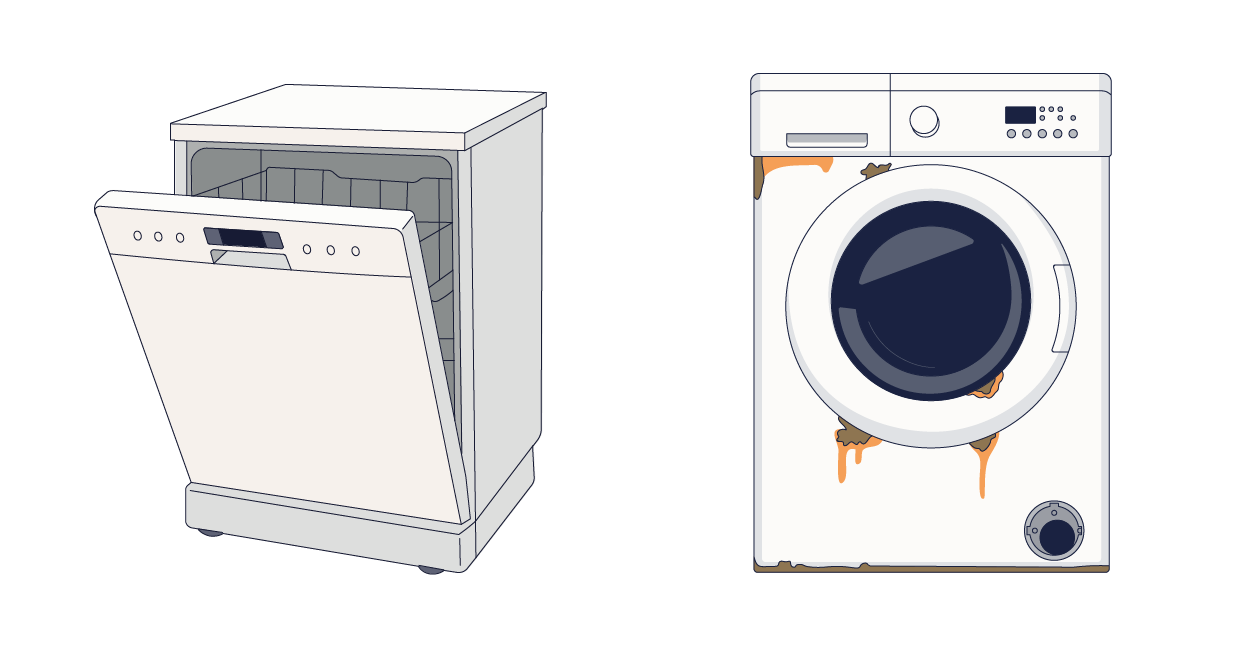
Small appliances: vacuum cleaner, toaster, coffee machine, hair dryer, waffle maker, mixer, etc.

Multimedia devices: computer, touch pad, computer or television screen, radio, hi-fi, GSM, etc..
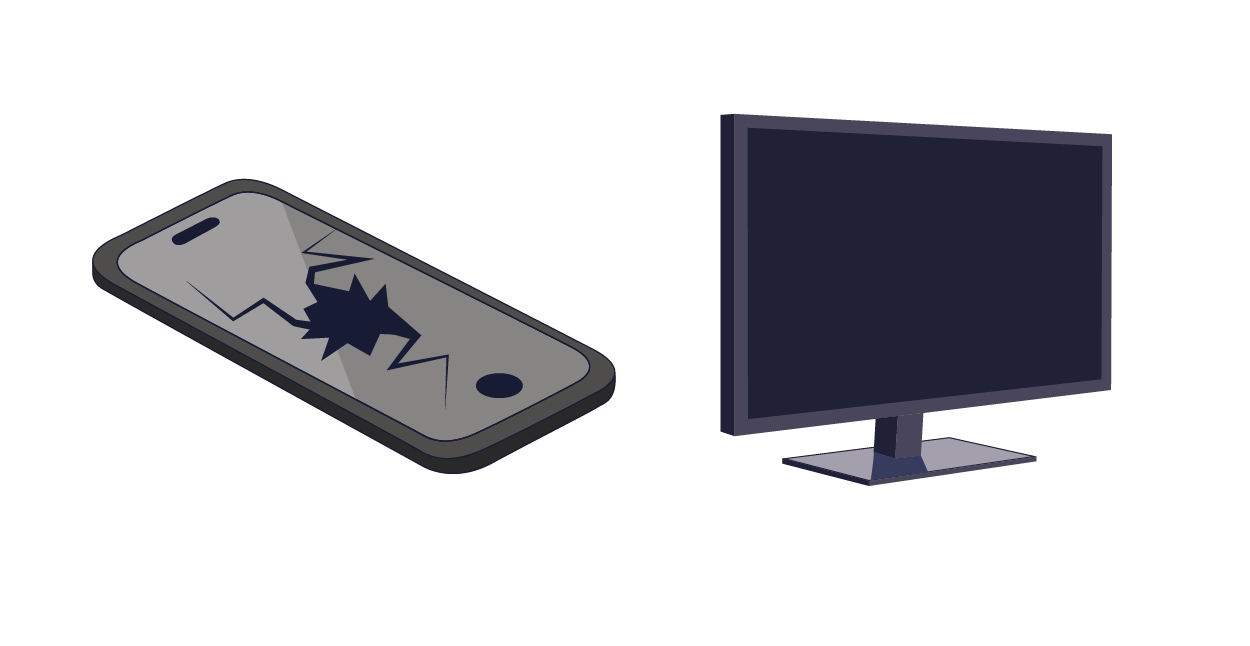
Fixtures
Floor lamp, desk lamp, chandelier, lantern, etc.
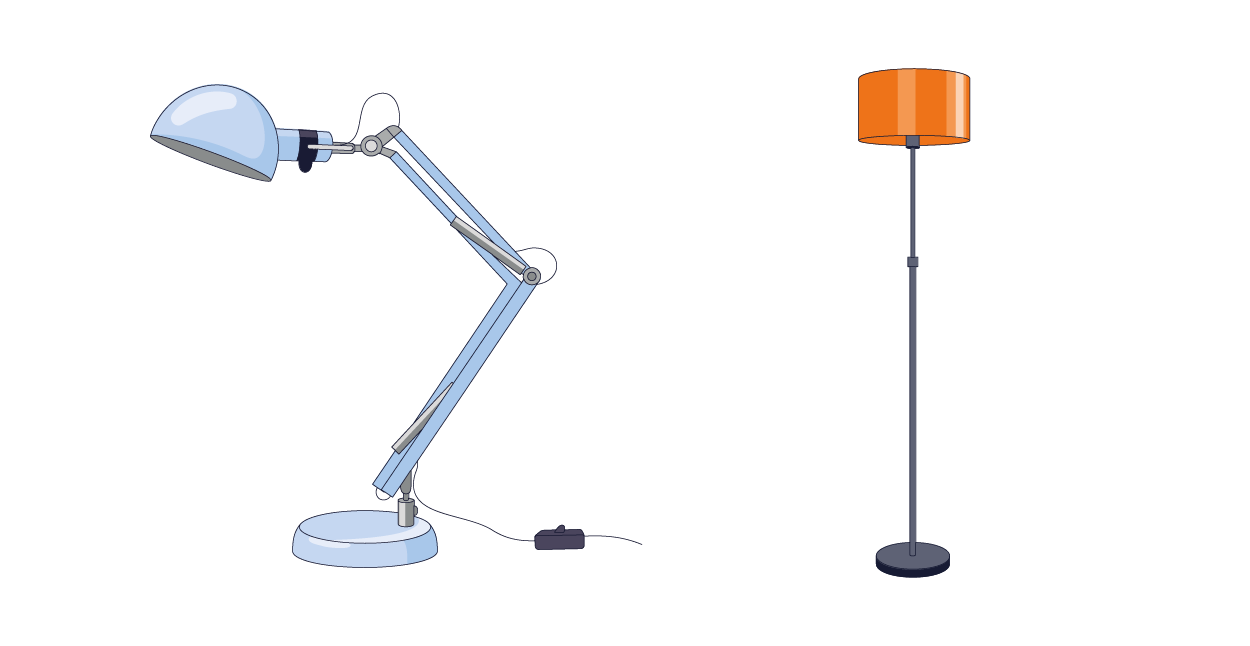
Furniture and decorative furniture
Table, chairs, bed, mattress, bed frame, disassembled wardrobe, sofa, armchair, office furniture, dresser, floor lamp, chandelier, garden furniture, umbrella, etc.
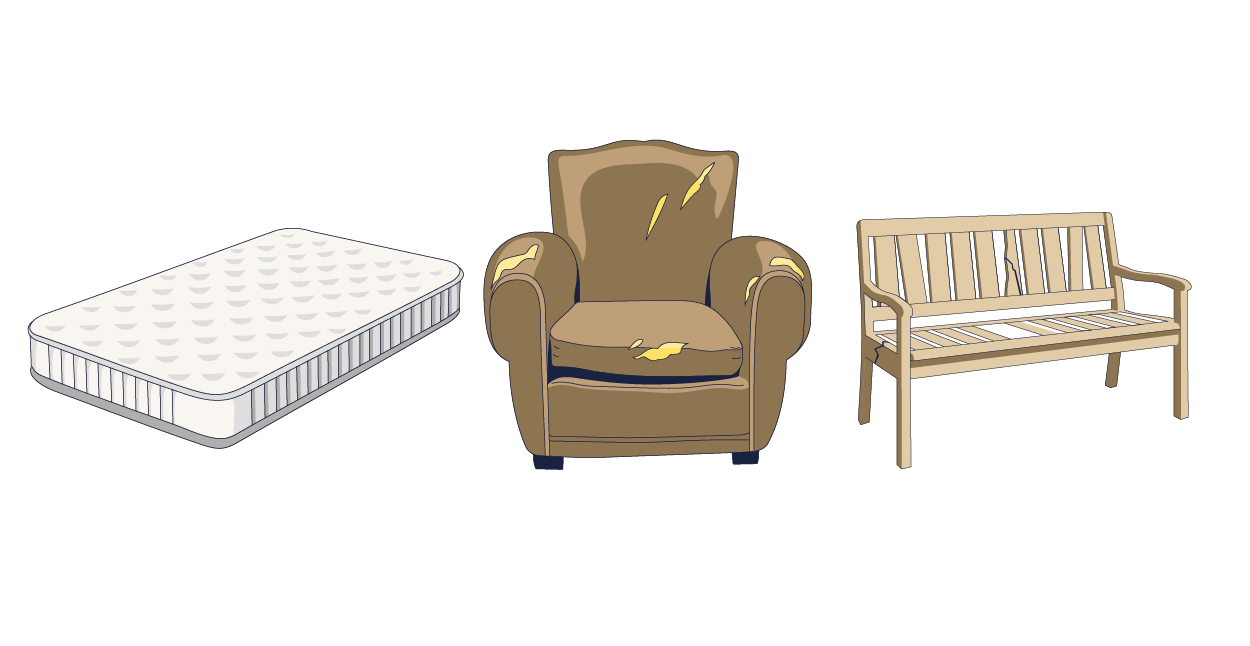
Other items
Bikes, strollers, prams, ironing boards, toys, kitchen items, sport items, etc.
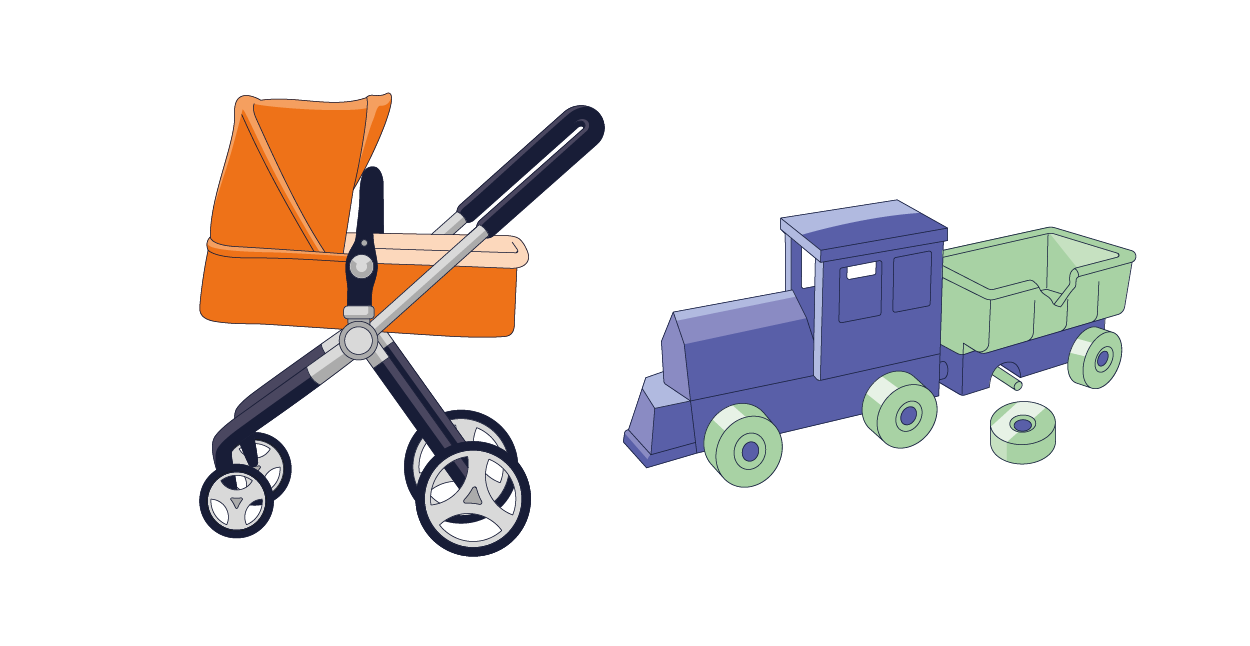
Where ?
Where can you get rid of your bulky household waste?
You can get rid of your bulky household items:

At one of our Recypark - See rates, rules and practical information on the Recypark page.

Using our home collection service for bulky household items*

With your reseller if you purchase electrical or electronic device of the same type.

Bring it to your municipal container park
How ?
How can you get rid of your bulky household waste?
*For home collection
You are entitled to:
- 3m³ of household bulky items (furniture, household appliances, knick-knacks, etc.) are collected free of charge per household per year.
- Any additional m³ of household bulky items is billed at €28/m³ incl. VAT, up to a maximum of 5m³.
- Renovation and construction waste is still subject to a charge For bricks/plaster/tiles, the charge is €4.24 per bag of up to 20 kg (limited to a maximum of 15 bags per collection).
The minimum quantity for the removal of a lorry is 1m³.
Making an appointment
- Information and appointments can only be made by telephone on 0800/ 981.81 (no online appointments).
- When making an appointment by telephone, you must state the number of m³ to be collected, the type of waste to be collected, the number of construction bags and your national register number.
On the day your household bulky waste is collected
- Put your household bulky waste out on the pavement
- The evening before after 8pm if the appointment is in the morning (except Schaerbeek: the same morning before 7.30am).
- As late as possible in the morning if the appointment is in the afternoon.
- It is mandatory to report the presence of electrical, electronic or computer equipment when making an appointment.
On the collection day, these items must be placed separately. Our specialised team will collect them to ensure they are recycled properly.
- You must provide a space for the lorry opposite your home for the loading time.
- You must be present during the time slot set when the appointment is made.
We encourage you to download our sorting memo and to fix where it can easily be seen (fridge door ...).
Your electrical or electronic appliances contain harmful substances that can have a negative impact on the environment. There are a number of recycling channels for treating these harmful substances and recycling the recovered material.
Before you get rid of your electronics, first assess their condition! If they're in good condition, pass them on to friends and family or social economy associations.
We encourage you to download our sorting memo and to fix where it can easily be seen (fridge door ...).
What ?
Some examples of electrical or electronic devices
Large appliances: washing machine, dishwasher, dryer, exhaust hood, oven, cooker, fridge, freezer, etc..
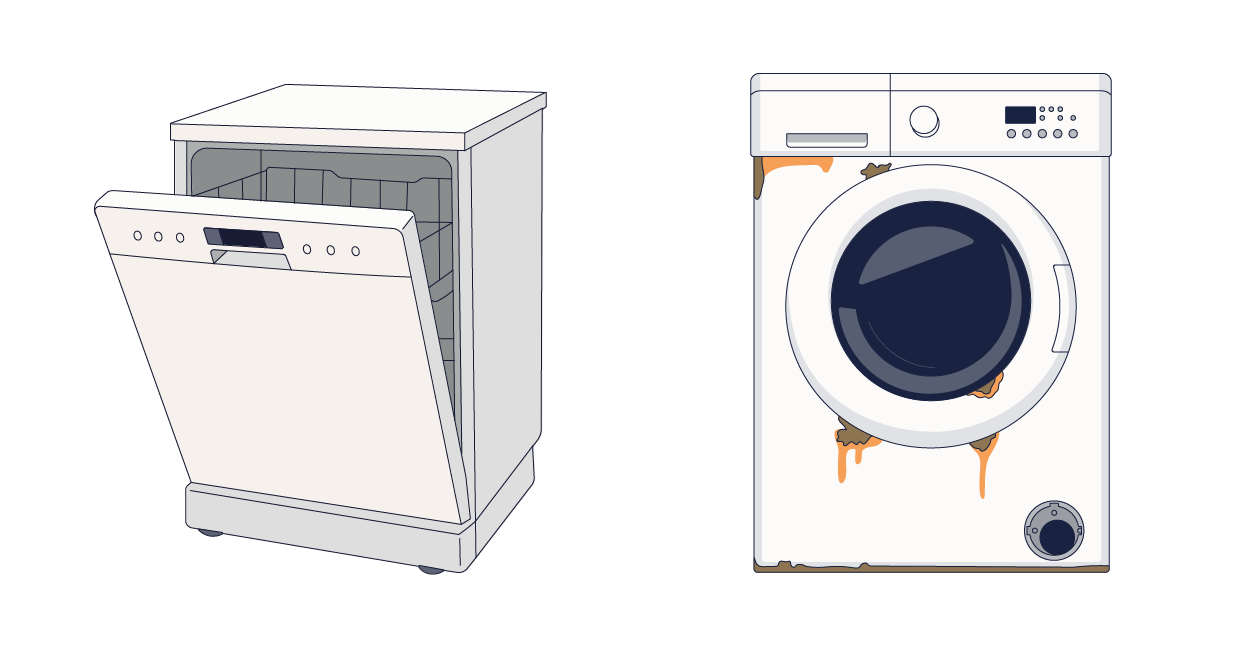
Small appliances: vacuum cleaner, toaster, coffee machine, hair dryer, waffle maker, mixer, etc..
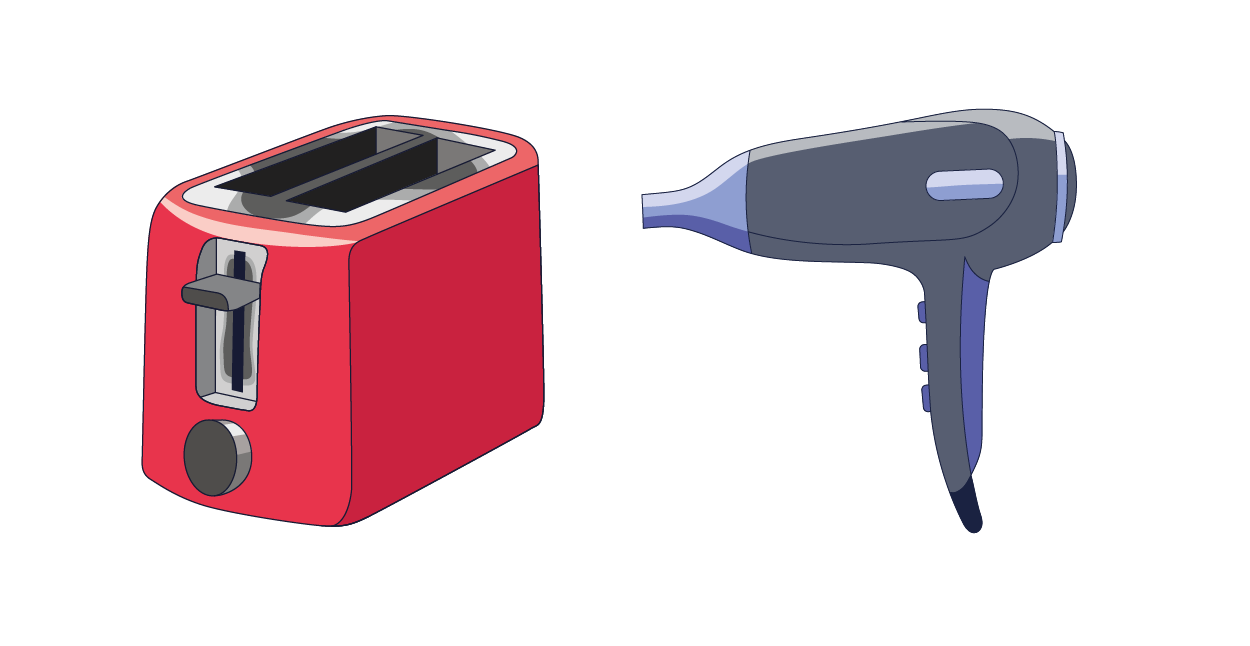
Multimedia devices: computer, touch pad, computer or television screen, radio, hi-fi, GSM, etc..
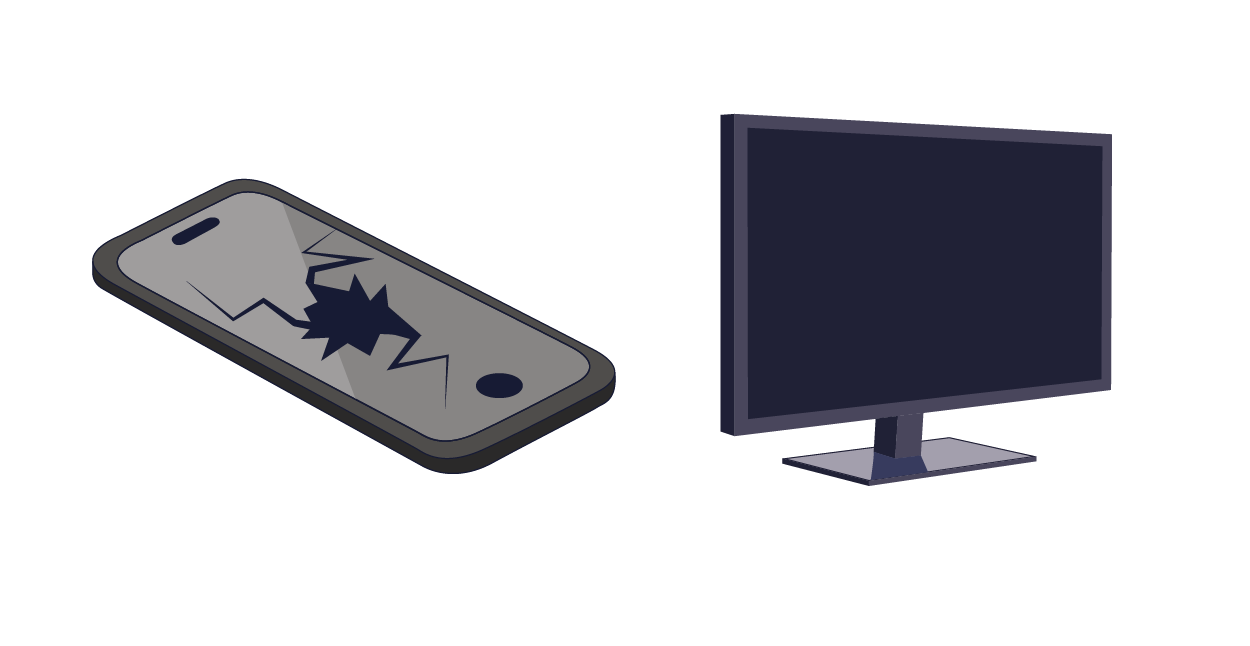
Light bulbs and fixtures: compact fluorescent light bulbs ("energy-saving light bulbs"), fluorescent tubes ("energy-saving tubes"), LED lamps and incandescent light bulbs ("traditional light bulbs"), etc..

Lighting: Floor lamp, desk lamp, chandelier, lantern, etc..

Where ?
How can you get rid of your electrical and electronic devices?
If the device is reusable:
- Offer it to those around you
- Gift it to a social economy association (cfr. https://social.brussels/ or www.res-sources.be)
If the device is not reusable:

At one of our Recypark - See rates, rules and practical information on the Recypark page.

Return it to the shop (if you are buying a new device of the same type)

Bring it to your municipal container park.

Contact our home collection service for bulky items*
We encourage you to download our sorting memo and to fix where it can easily be seen (fridge door ...).
Construction and renovation waste represents a growing volume and tonnage.
We encourage you to download our sorting memo and to fix where it can easily be seen (fridge door ...).
What ?
What constitutes construction or renovation waste?
Any item that is physically affixed to your home is usually considered construction or renovation material. It is however essential to distinguish between 2 types of waste.
Waste authorized in the “Inert construction, renovation and demolition waste” category:

- Rubble
- Bricks
- Brick fragments
- Pebbles
- Stones

- Floor tiles
- Slabs
- Roof tiles

- Concrete
- Bond stone
- Cement

- Plaster (scraps, Gyproc type boards and ceilings)
Waste authorized in the “Other construction, renovation and demolition waste” category:

- Treated and untreated wood

- Wooden, metal or plastic doors, frames and shutters

- Gutters and pipes

- Floor coverings

- Bathroom fixtures
Waste refused in the “Construction, renovation and demolition waste” category:
- Roof covering materials (roofing felt / Derbigum)
- Asbestos (Eternit)
Where ?
How can you get rid of your construction or renovation waste?
You can dispose of your construction / renovation waste:

At one of our Recypark - See rates, rules and practical information on the Recypark page of our website.
How ?
How should you present your waste?
Some rules for “Construction, renovation and demolition waste”:
- For frames, doors, shutters and construction timber, plaster in bags (scraps, Gyproc type boards and ceilings), see “Sorted waste for which payment is required”.
- Roof covering materials (roofing felt / Derbigum) are refused at Recypark → See “Waste not accepted.
- Loose “Bricks and brick fragments” waste is refused at Recypark. It must be in bags. For more information see “Sorted waste for which payment is required”.
- A maximum of twenty bags (20) may be brought to a Recypark.
- A maximum of twenty kilograms (20 kg) per bag measuring 50 x 80 cm.
We encourage you to download our sorting memo and to fix where it can easily be seen (fridge door ...).
Despite a much lower collection tonnage than other waste, Bruxelles-Propreté reserves a specific collection method for chemicals, with specially trained staff because of the danger they represent for the environment and for the people who handle them.
We encourage you to download our sorting memo and to fix where it can easily be seen (fridge door ...).
What ?
Chemical waste packaging containing product residues and bearing at least one of the pictograms listed below should be sent to PROXY CHIMIK:
Most household chemical waste can be identified by one of the following symbols on the packaging:






Cleaning and maintenance products
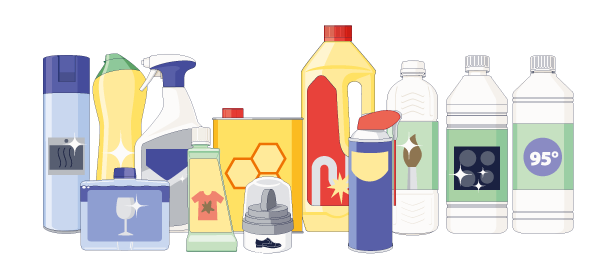
Garden products
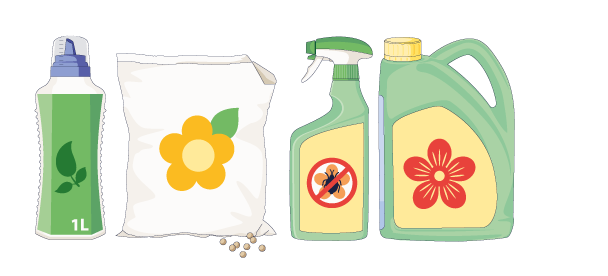
Beauty products
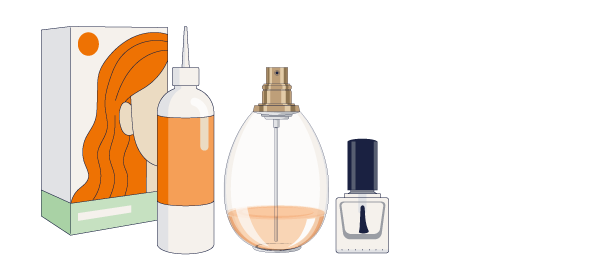
Smoke detectors (standard and ionisation): Accepted only at Recypark, not at Proxy Chimik.
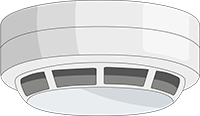
Briquets and lighteners
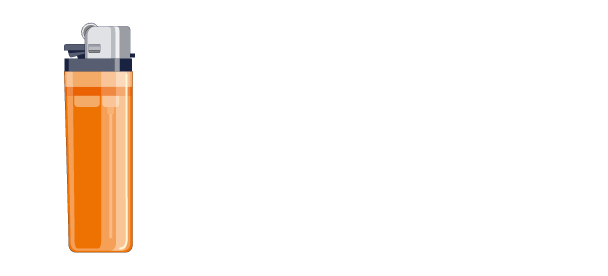
Extinguishers
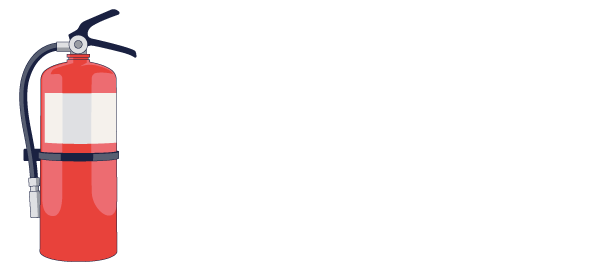
Oils ad fats for frying. More information at www.valorfrit.be.
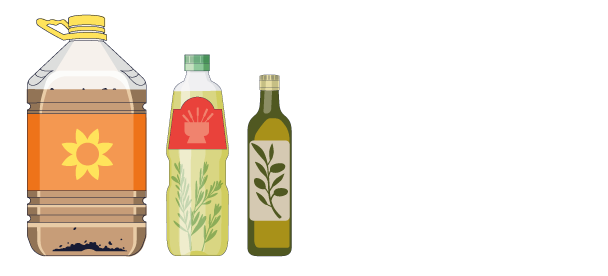
Batteries and others. For more information and collection points, visit www.bebat.be.

Medical products

Automotive products
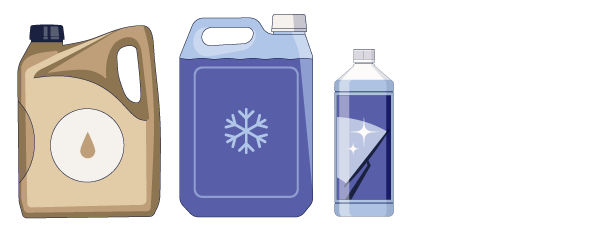
Coating products
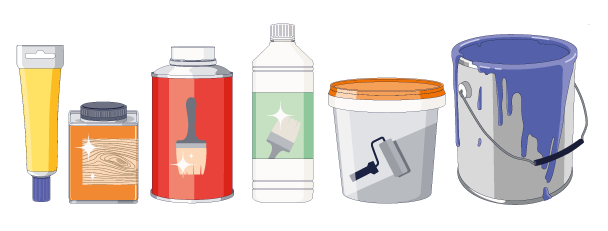
Printing products
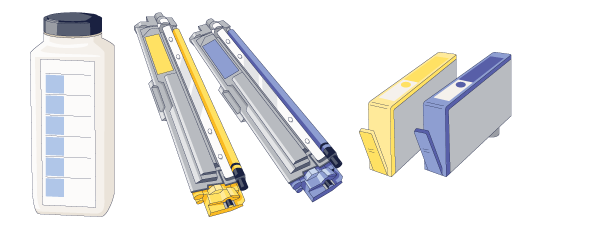
Light bulbs, compact fluorescent ("energy-saving") lamps, fluorescent tubes (neon) and LED lamps. More information and collection points at www.recupel.be.
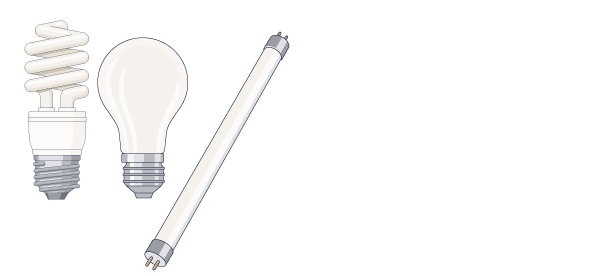
All aerosols, except empty cosmetic and food cans.
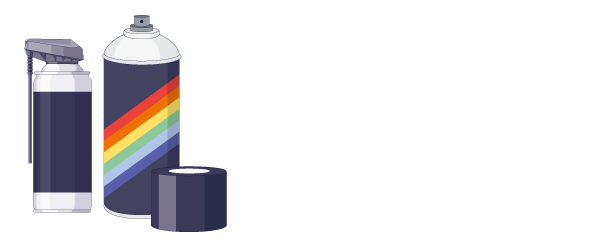
Nitrous oxide cylinders
- The cylinders must be well emptied
- Above all, they must not end up in building containers, rubbish bags or public litter bins.
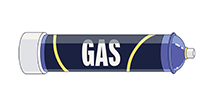
The following is not accepted at PROXY CHIMIK and in the Recypark :
- Asbestos waste ("Eternit")
- Gas bottles and cylinders (including helium)
- Drums and cans larger than 15l
- Explosive materials (leftover fireworks)
- Infectious products (clinical waste)
- Laboratory products
- Radioactive products
- Roofing (Derbigum)
- Gas cartridges
- Empty cans of non-toxic cleaning products, e.g. bleach
- Plaster, cement, flat glass, ceramic objects and teflon
- Sharp objects (glass, plates, scissors, cutters, etc.)
- Empty cans of non-toxic cleaning products, e.g. bleach
- Plastic corks (wine bottles and others)
- Medicines
To get rid of them, please contact Bruxelles Environnement on 02/775 75 75 or at https://environnement.brussels/.
Where ?
Where can you place your household chemical waste?

At the PROXY CHIMIK dropping sites, as is suggested by its name, PROXY CHIMIK is a local service. You can drop your household chemical waste at some 100 locations. These sites are indicated in our PROXY CHIMIK guide.
At one of our Recypark - See rates, rules and practical information on the Recypark page.
- In the municipal container parks in Auderghem, Ganshoren, Saint-Josse, Watermael-Boitsfort and Woluwe-Saint-Pierre for the residents of these municipalities. Find out more about the practical details in the container park of your municipality.
- At the municipal dropping sites for household chemical waste in Anderlecht, Berchem-Sainte-Agathe, Evere, Jette and Molenbeek-Saint-Jean for the residents of these municipalities. Please contact the administration of your municipality for more practical details.
- At the specific collections for household chemical waste in Koekelberg and Woluwe-Saint-Lambert for the residents of these municipalities. Please contact the administration of your municipality for the exact date and location of these collections.
How ?
A few rules
- Bring your household chemical products in their original packaging and make sure they are properly closed (not loose in a plastic bag)
- Close and correctly label the container containing household chemical waste before dropping it off at a PROXY CHIMIK or Recypark.

- Also bring the empty containers of household chemical products
- Place energy-saving light bulbs, incandescent (‘traditional’) and halogen bulbs, fluorescent tubes (neon lights) and LED bulbs in a plastic bag to separate them from other waste.
- Put syringes and/or needles in a special container available from your pharmacist. Drop them off at any PROXY CHIMIK or Recypark.

- Separate liquids from solids
- Do not mix materials together
- Do not exceed 35l per visit to the PROXY CHIMIK.
- Up to 30l for coating products (paint, varnish,…)
- Up to 10 pieces for neon
- Any exceeding amount will be rejected
We encourage you to download our sorting memo and to fix where it can easily be seen (fridge door ...).
We encourage you to download our sorting memo and to fix where it can easily be seen (fridge door ...).
What ?
What waste should be sorted in this category?
Waste authorized in the "Medicines and medical waste" category:
Pill bottles

Sprays, bottles

Bottles syrup

Ointment tubes

Pill packs

Waste refused in the "Medicines and medical waste" category:
- Potentially explosive products
- Potentially radioactive products
- Infectious products (clinical waste)
- Potentially infectious products (probes, tubing, bags, etc.)
- Bacteriological waste
- Other medical waste
Where ?
Where can you place your medication?
You can dispose of your "Medicines and medical waste":

- At your pharmacist.
How ?
How should you present your waste?
Some rules for medicines and medical waste:
- Medicines, infectious laboratory products and clinical waste are refused in Recypark.
- Some medicines and medical waste items may be hazardous, so please also take account of the safety rules for "Hazardous waste".
- Put syringes in a special rigid yellow container available in pharmacies.
- Products should if possible be in their original packaging or in closed and labelled packaging (full or empty).
Other
Healthcare waste
Do For more information on health care waste management requirements, check the website of Bruxelles Environnement.
We encourage you to download our sorting memo and to fix where it can easily be seen (fridge door ...).
Find out where to put your Christmas tree after the festive season.
We encourage you to download our sorting memo and to fix where it can easily be seen (fridge door ...).
What ?
What waste should be sorted in this category?
- Real Christmas trees
- Artificial / plastic tree
Where ?
Where can you place your Christmas tree?
You can dispose of your real Christmas trees:

On the pavement, on garden waste collection day
At one of our Recypark - See rates, rules and practical information on the Recypark page.
How ?
Some rules for real Christmas trees:
- Remove the pot and all the decorations.
- You may leave the wooden stand.
- Your artificial tree is a bulky household item.
We encourage you to download our sorting memo and to fix where it can easily be seen (fridge door ...).

















